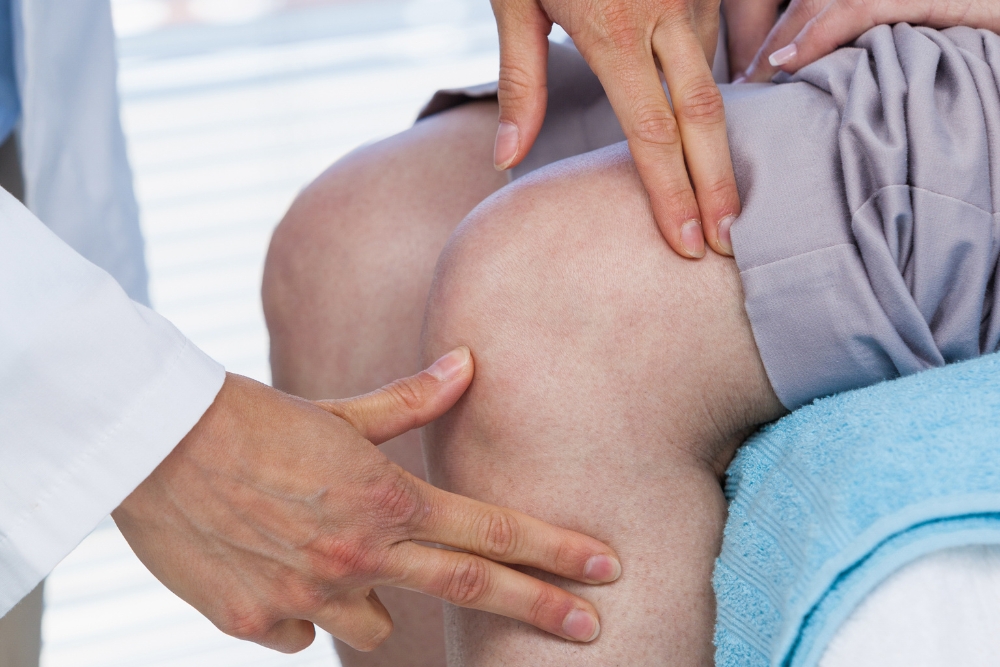Discovering Bone on Bone Knee Treatments: Insights into Options and Care in the United States
Did you know that advanced bone-on-bone knee pain arises from cartilage loss and affects mobility significantly? Understanding its causes, symptoms, and treatment options is essential to help manage discomfort and maintain quality of life as the condition progresses.

Understanding Bone on Bone Knee Condition
Knee osteoarthritis affects millions of adults in the United States, especially those over 45 years old. “Bone on bone” describes the state of advanced cartilage loss where the femur and tibia bones rub together inside the knee joint, causing pain, swelling, and stiffness. This condition increasingly limits daily activities and may cause disability without appropriate management.
Non-Surgical Treatments: First-Line and Advanced Options
Physical Therapy and Exercise Programs
Physical therapy (PT) remains a central non-surgical treatment for bone on bone knee pain and is commonly recommended as a first-line approach by U.S. orthopedic specialists. Customized PT programs focus on:
- Strengthening muscles around the knee to improve joint stability
- Enhancing flexibility and joint range of motion
- Low-impact cardiovascular exercises like walking, swimming, and cycling
- Balance and proprioception training to prevent falls and enhance function
Research in the U.S. suggests that supervised physical therapy may help delay the need for total knee replacement (total knee arthroplasty or TKA) in some patients. Patients are advised to work with licensed physical therapists to receive tailored and progressive exercise regimens designed to improve knee function without exacerbating pain.
Weight Management for Reducing Knee Load
Weight loss can be an effective strategy for alleviating bone on bone knee pain and improving function. Evidence indicates that losing just one pound of body weight reduces knee joint load by approximately four pounds, meaning modest weight reduction may help decrease pain.
Combining a balanced diet with regular, low-impact activity, such as swimming or cycling, supports sustained weight loss. Patients in the United States often have access to programs like Penn Medicine’s Bariatric Surgery and Health Weight Management services for personalized dietary counseling and lifestyle support.
Injections to Support Tissue Health and Reduce Inflammation
Several injection therapies may provide pain relief and improve knee function:
- Platelet-Rich Plasma (PRP) Therapy: PRP involves concentrating a patient’s own blood platelets and injecting them into the knee joint. These platelets release growth factors that may aid tissue repair and reduce inflammation. PRP is considered a promising injection treatment for bone on bone knee pain with a favorable safety profile. Patients typically undergo 2-3 PRP treatments spaced 4-6 weeks apart. Some U.S. studies report PRP performing better than corticosteroid and hyaluronic acid injections in improving function and reducing pain.
- Corticosteroid Injections: These injections can reduce inflammation and provide short-term pain relief but generally offer temporary benefits compared to PRP. They are sometimes used for acute flare-ups.
- Hyaluronic Acid (HA) Injections: HA injections provide lubrication to the joint although their efficacy may be less durable than PRP injections.
Knee Bracing for Joint Support
Knee braces are used to provide external support, realigning the joint to reduce direct bone-on-bone contact and subsequent pain. Specialized braces may apply lateral pressure on the knee to unload affected compartments, especially useful for unicompartmental osteoarthritis. Bracing is a non-invasive adjunctive treatment recommended to improve mobility and reduce pain during daily activities, potentially delaying the need for surgery.
Dietary Supplements and Nutraceutical Support
Supplements such as glucosamine and chondroitin sulfate are commonly used by patients aiming to support cartilage health. Approximately 60% of users report pain reduction and improved function after consistent use for six weeks or more. While these supplements may be beneficial, they should be taken under medical supervision to ensure safety and appropriate integration with other treatments.
Mind-Body Therapies
Integrating mind-body exercises like yoga and Tai Chi is often recommended as complementary therapies for managing knee osteoarthritis. These low-impact activities may improve physical function, reduce pain, and enhance mental well-being, offering sustained benefits up to one year post-intervention.
Emerging Therapies and Considerations
Stem Cell Therapy
Stem cell therapy involves using mesenchymal stem cells harvested from a patient’s adipose tissue or bone marrow and injecting them into the knee joint to potentially stimulate cartilage repair and reduce inflammation. While this therapy shows promise and has been associated with some pain and functional improvements, as of 2025 it is:
- More invasive, involving minor surgical procedures for cell harvesting
- More expensive relative to other options like PRP
- Associated with longer recovery time and risks such as infection and nerve damage
- Recommended only after careful patient evaluation at specialized centers
Due to safety concerns, commercial “off-the-shelf” stem cell products derived from amniotic or placental tissue are generally not recommended because they lack living stem cells and have been linked to serious infections.
When Surgery May Be Considered
Total Knee Arthroplasty (TKA)
For patients with severe bone-on-bone knee osteoarthritis who do not experience adequate relief from non-surgical treatments, total knee arthroplasty may be considered. TKA involves replacing damaged joint surfaces with artificial components to restore function and reduce pain.
Key considerations related to TKA include:
- Surgical risks such as infection, blood clots, and potential need for future revision surgeries
- Suitability evaluated based on patient age, activity level, overall health, and extent of joint damage
- Often reserved after non-surgical treatments have been trialed and optimized
Coordinated and Personalized Care Approaches
In U.S. healthcare settings, multidisciplinary care teams often ensure personalized treatment plans for patients with bone on bone knee osteoarthritis. These plans typically combine:
- Physical therapy and exercise
- Weight management and dietary counseling
- Injection therapies (PRP as a prominent option; corticosteroid as adjunct)
- Bracing and pain medication management
- Surgical evaluation when appropriate
Consultations with orthopedic specialists, physiatrists, and rehabilitation experts are recommended to design individualized regimens that align with patient needs and lifestyle goals.
The management of bone on bone knee pain in the United States in 2025 generally emphasizes a combination of non-surgical, evidence-informed interventions aimed at improving quality of life and delaying surgery when possible. Approaches include:
- Physical therapy focused on strengthening, flexibility, and balance
- Weight reduction to lessen joint stress
- Platelet-Rich Plasma injections as a promising advanced therapy
- Knee bracing and appropriate medications or supplements for pain control
- Complementary mind-body exercises
- Careful consideration of stem cell therapy in selected patients
- Surgical options such as total knee arthroplasty reserved for advanced cases
Patients are encouraged to work closely with healthcare providers to determine the most appropriate treatment pathway based on their unique medical history, symptom severity, and functional goals.
Sources
- Knee Pain Centers of America – Bone on Bone Knee Pain Treatment
- Penn Medicine – Nonsurgical Treatments for Knee Pain
- Reflex Knee Specialists – The Current State of Stem Cell Therapies in 2025
Disclaimer: All content, including text, graphics, images and information, contained on or available through this web site is for general information purposes only. The information and materials contained in these pages and the terms, conditions and descriptions that appear, are subject to change without notice.



